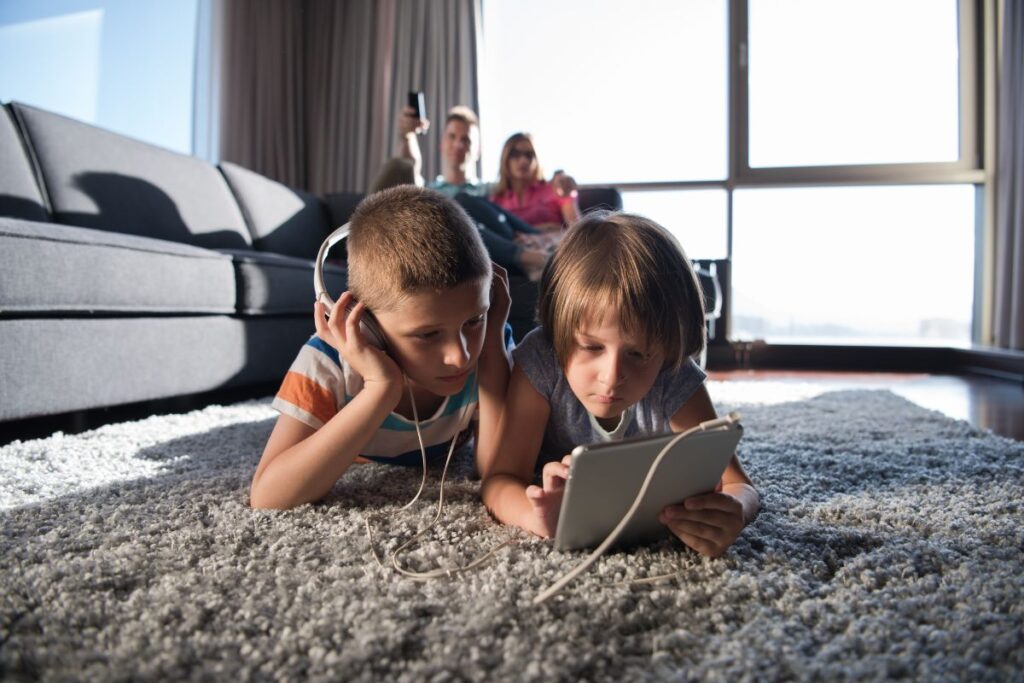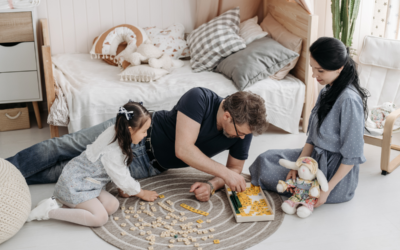As you know, we are living in a very digital age, where screens have become a major part of our everyday lives. There is no denying that technology can offer so many benefits, however, to much screen time can be detrimental, especially for primary school-aged children and in the times we are living in, unless you live under a rock, there is almost no way to avoid it altogether.
So, the challenge then, is how can you as a parent create a balance in your home between sometimes using screens but also making sure your kids have time for getting outside, being active and connecting with other real-life humans, rather than just screen characters.

In this blog, we have put together eight strategies for you to help your children’s screen time effectively. In turn, it helps their development, and also connects them to the real world more:
1. Set Clear Screen Time Limits
Establishing clear and reasonable screen time limits is the foundation of managing children’s digital consumption. It is recommended that children aged 6 to 18 should have no more than 1-2 hours of recreational screen time per day. Create a daily or weekly screen time schedule and ensure your child understands the rules.
2. Prioritise Educational Apps
Not all screen time is created equal. Encourage the use of educational apps and games that promote learning and critical thinking. Many apps cater to various subjects, from math and science to language and geography. Be involved in selecting and evaluating these apps to ensure they align with your child’s educational goals.
3. Designate Family Screen-Free Hours
Designate certain times of the day or week as family screen-free hours. These periods should be dedicated to bonding activities like family dinners, board games, or storytelling. By consistently implementing screen-free hours, you’ll encourage meaningful interactions and reduce screen dependence.
4. Create a Technology-Free Bedroom
Avoid allowing screens in your child’s bedroom, especially during bedtime. The blue light emitted from screens can disrupt sleep patterns, affecting your child’s overall health. Set up a charging station outside the bedroom to reinforce the importance of a technology-free sleep environment.
5. Be a Digital Role Model
Children often mimic their parents’ behaviour. If you want your child to use screens mindfully, model the behaviour yourself. Be conscious of your own screen time and demonstrate how to use technology responsibly and in moderation.
6. Encourage Outdoor Play
Outdoor play is essential for a child’s physical and mental development. Encourage your child to engage in sports, explore nature, or simply play in the backyard. Setting aside time for outdoor activities helps counterbalance screen time and promotes a healthy lifestyle.

7. Use Screen Time as a Reward
Consider using screen time as a reward for completing tasks like homework, chores, or reading a book. This approach teaches children about time management and responsibility while motivating them to accomplish important activities.
8. Foster Open Communication
Maintaining an open and non-judgmental line of communication with your child is crucial. Discuss the importance of balance and the reasons behind screen time limits. Encourage your child to share their online experiences and any concerns they may have about their digital interactions.

In saying all of this, finding a healthy balance for your child’s screen time is a collaborative effort between you and your child.
By setting clear limits, prioritising educational content, and promoting physical activity and face-to-face interactions, you can ensure that screens enhance your child’s development rather than hinder it.
Remember that consistency, communication, and leading by example are key to successfully navigating screen time in the digital age we are living in.





